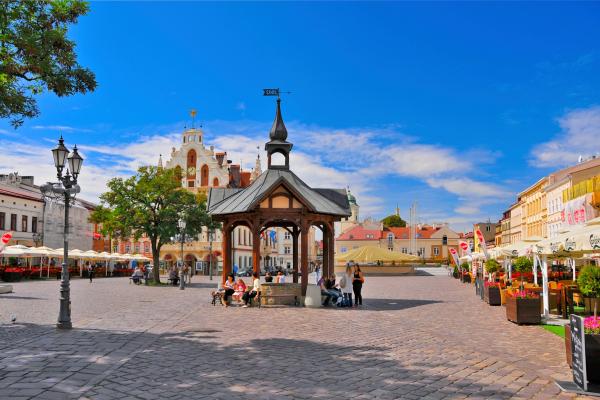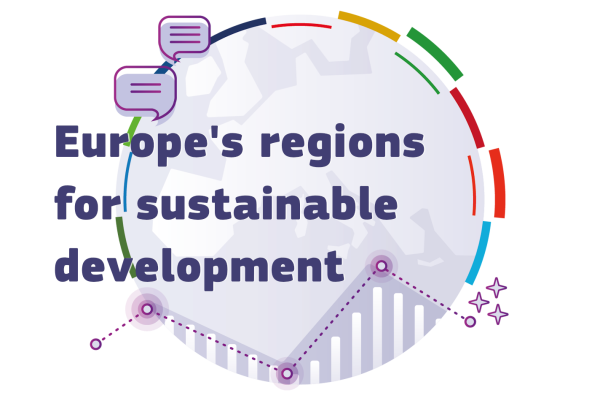
A new study from the Directorate-General for Economic and Financial Affairs and the JRC provides new insights on the activities and economic impacts of the Recovery and Resilience Facility (RRF), at sectoral and country level.
Based on a new database created with the help of AI technology, the study shows the sectoral distribution of the more than 2 800 reform and investment measures funded by the RRF across the 27 Member States.
With this, it is possible to provide new, more granular estimates of economic impacts of the RRF, for each country and for individual sectors.
The study looks at Germany by way of example and estimates the impact of the RRF on the German economy at around EUR 66 bn (1.6% of GDP). This is twice the size of Germany’s national envelope under the RRF.
The German economy is the largest beneficiary of RRF-induced spillovers across the EU, with more than two-thirds of its potential GDP gains originating from the implementation of other countries’ Recovery and Resilience Plans.
This work provides new insights on the importance of the RRF for the preservation, transformation and deepening of the EU’s Single Market since the COVID-19 pandemic.
The RRF has a strong positive impact in every EU country
Using the data on RRF investments, the study provides new estimates of economic impacts at national level, assuming full implementation of the 27 plans. This is done by using the FIDELIO model of the JRC.
Over the period 2020-2030, the total impact of the RRF is estimated at EUR 891.7 billion. This total includes direct impacts, amounting to EUR 546.2 bn, and spillover (indirect) impacts, amounting to EUR 345.5 bn. Direct impacts are the impacts that arise in a country from the delivery of its own recovery and resilience plan. Spillover impacts are the impacts that arise from the implementation of other countries’ national plans.
Said otherwise, about 40% of the total impacts of the RRF stem from economic spillovers. This reflects the deep economic integration within the EU, and the fact that an increase in demand in one country leads to higher demand for imported final and intermediate goods from other countries.
The study confirms that, taking both impacts into consideration, the RRF has a positive economic impact in all Member States, with countries such as Greece, Croatia, Spain, and Italy benefitting significantly as a percentage of their GDP.
It also shows that countries with comparatively smaller RRF envelopes in percentage of GDP, such as Germany, France, the Netherlands, and Austria, benefit significantly from cross-border spillovers generated by other Member States' plans, with spillover impacts bringing the total impact of the RRF significantly beyond the size of their national plans. In particular:
- Germany stands to gain the most in absolute terms from RRF spillovers across the EU. The economic impact of the RRF for Germany (EUR 66.1 bn) is double the size of its national envelope (EUR 32.3 bn), thanks to positive spillovers from other national plans.
- Slovakia stands to gain the most from spillovers in terms of share of GDP (1.8% of GDP), thanks to its deep integration in EU value chains.
- Countries such as France, Netherlands, Austria, Denmark, Sweden, Finland, Luxembourg Ireland, Belgium, the Czech Republic, Slovakia, Slovenia also stand to see an economic impact that is higher than their original envelope, when factoring in spillover effects.
New investment database outlines EU green and digital transformation
Using the data available in mid-January 2025 thanks to a new AI-powered database, the study analysed 1,747 investment-related measures, as well as 212 reforms with implementation costs, amounting to a RRF total value of € 655.5 billion.
Looking across the 27 EU Member States, the data shows that the sectors that will benefit most from the funding are those related to the green transition, such as the energy-efficient modernisation of buildings, construction of electricity and renewable energy projects, railway infrastructure, and investments in sustainable transport vehicles and electrical equipment (e.g. batteries and charging points).
Sectors relating to the digital transition also feature prominently, notably IT software, the construction of telecommunication infrastructure and the manufacturing of electronic products and electrical equipment.
Modelling direct impacts and spillovers
RRF investment measures were fed into European Commission's FIDELIO macroeconomic model. This model simulates how different parts of the economy, including households, firms and governments—interact with each other across industries and national and international markets. RRF investment will boost spending which in turn will increase demand for goods and services, both within borders – direct impact - and from other countries – spillovers.
The analysis does not cover the impacts of reforms, and do not reflect the welfare effects of the products or services acquired and enjoyed in the EU. The estimates presented here are thus likely to underestimate the full impact of the RRF.
Background
The Recovery and Resilience Facility (RRF) is the cornerstone of NextGenerationEU, the EU’s post-COVID Recovery Plan. With a budget of EUR 650 billion, amounting to around 4% of the EU GDP, the RRF finances reform and investment measures across the EU from 2020 to 2026.
To date, most studies on the RRF have focused on the broad macro-economic picture or on specific policy domains and country experiences. This new study classifies all RRF reform and investment measures according to economic sectors, which enables a detailed and systematic analysis of macro-economic, sectoral and policy impacts.
Second, by applying the well-established FIDELIO model to this new sectoral dataset, it is now possible to assess the direct and spillover impacts of RRF-funded investments and to break down these results across 64 economic sectors, for the EU and for each Member State.
Details
- Publication date
- 21 May 2025
- Author
- Joint Research Centre
- JRC portfolios 2025-27





